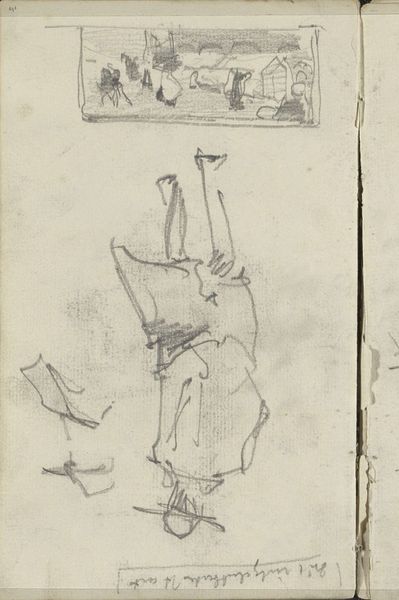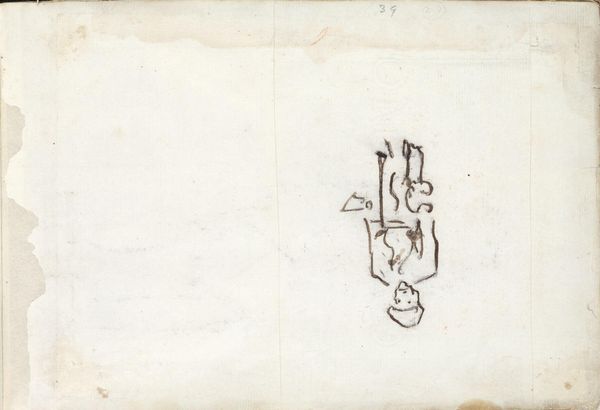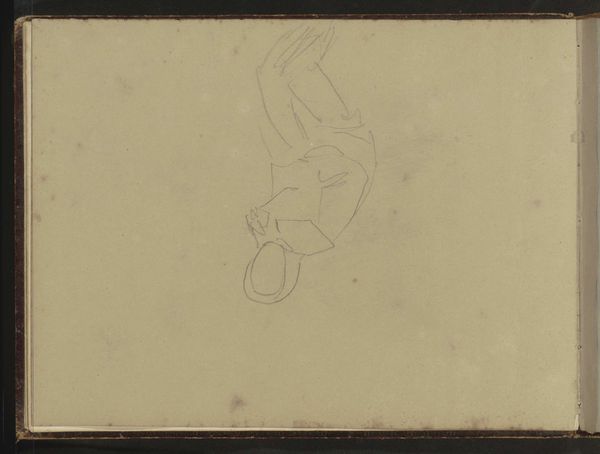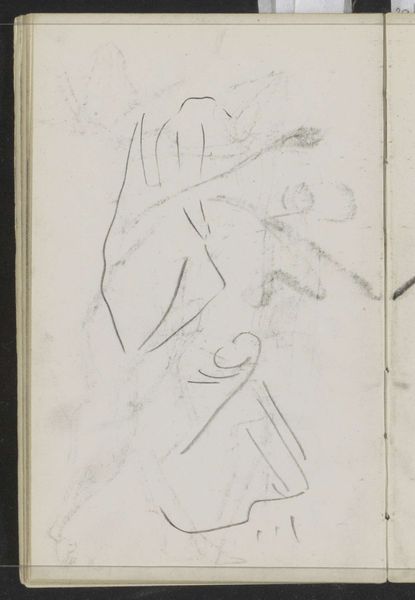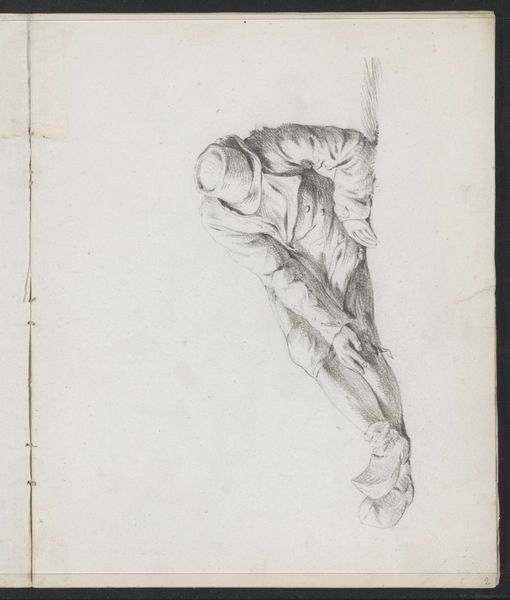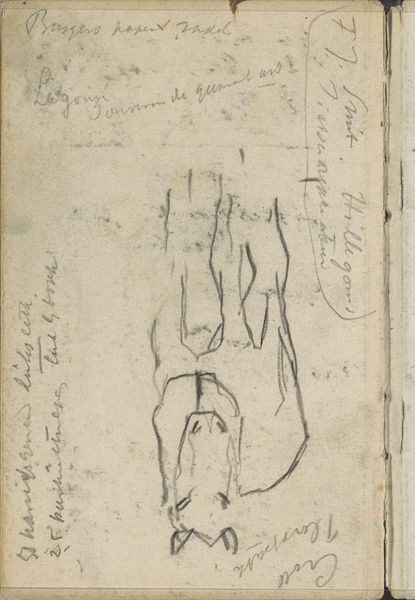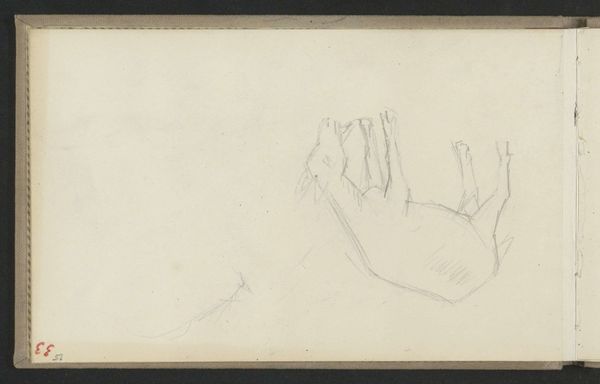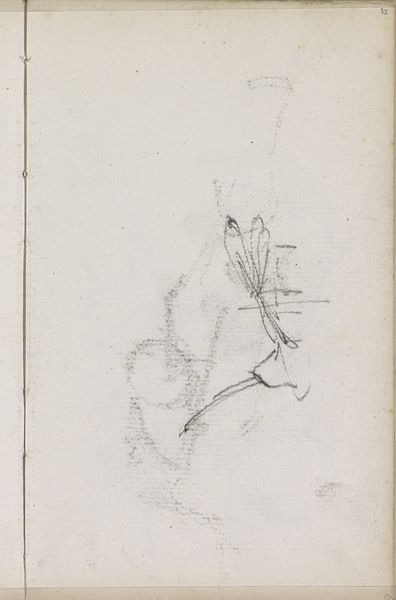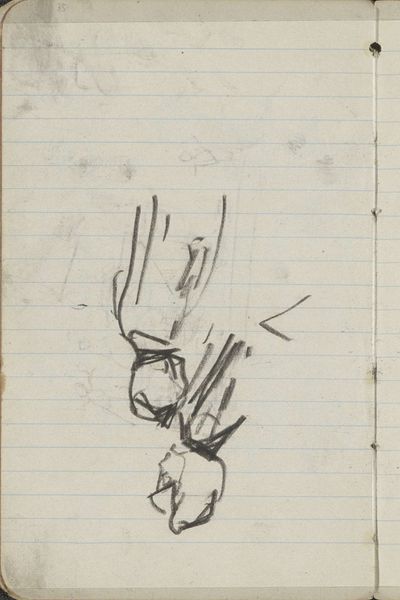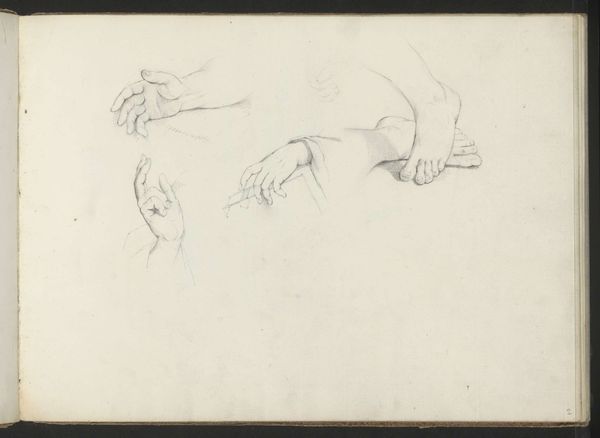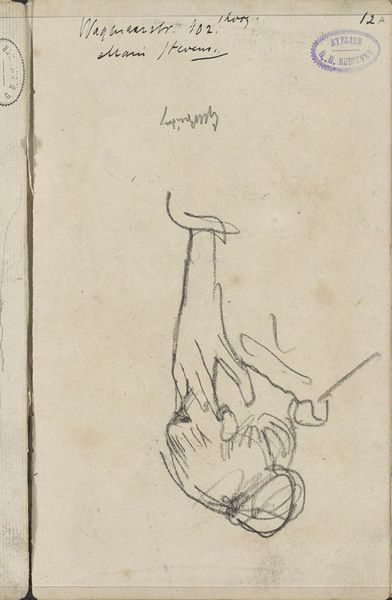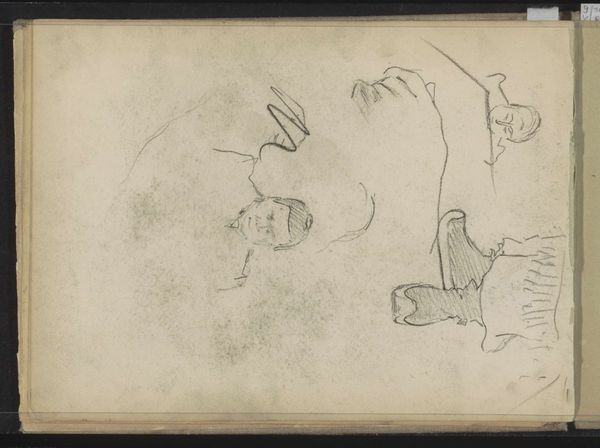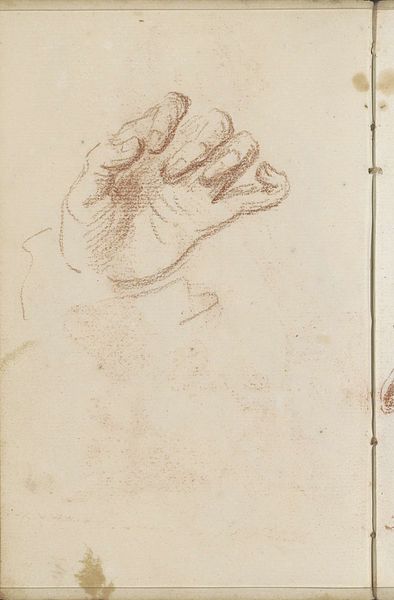
drawing, pencil
#
portrait
#
drawing
#
figuration
#
pencil
#
realism
Copyright: Rijks Museum: Open Domain
Editor: Here we have Anton Mauve's "Standing Man on Clogs, Arms Akimbo," a pencil drawing created sometime between 1848 and 1888. It's a quick sketch, very minimalist. What stands out to me is the figure's assertive posture, even in this simple form. How do you interpret this work, especially given the period in which it was made? Curator: Well, I'm immediately drawn to the social context of representing a man in clogs with his arms akimbo. It's crucial to consider this work within the rise of Realism, where artists aimed to depict everyday life and particularly, working-class individuals, free from romanticization. What does it mean to present this figure—likely a farmer or manual laborer—with such directness and perhaps even a hint of defiance? Does his stance suggest a challenge to the viewer, a claiming of space and identity? Editor: I hadn't thought about it as defiance, but I see what you mean. The arms akimbo give him a certain presence. But isn't it just a study? Does every sketch have such a loaded meaning? Curator: Not every sketch needs to be a manifesto, but the very act of choosing this subject—a working-class man—and depicting him with such unvarnished honesty, speaks to a shift in artistic values and a growing interest in social realities. Realism sought to give visibility to those often ignored or misrepresented in art. Considering issues of representation, who is typically deemed worthy of portraiture and why? Editor: That's a good point. Before, it was mostly wealthy people or historical figures. So, even a simple sketch like this could be a political statement of sorts. Curator: Exactly. It asks us to reflect on whose stories are told and how art can challenge those historical power dynamics. And what we might learn from paying closer attention to seemingly ordinary individuals. Editor: I see it in a new light now. Thanks, I never considered the act of choosing a subject itself as a political act. Curator: That's the power of engaging with art through a critical lens. It opens up broader conversations about history, identity, and social justice.
Comments
No comments
Be the first to comment and join the conversation on the ultimate creative platform.
